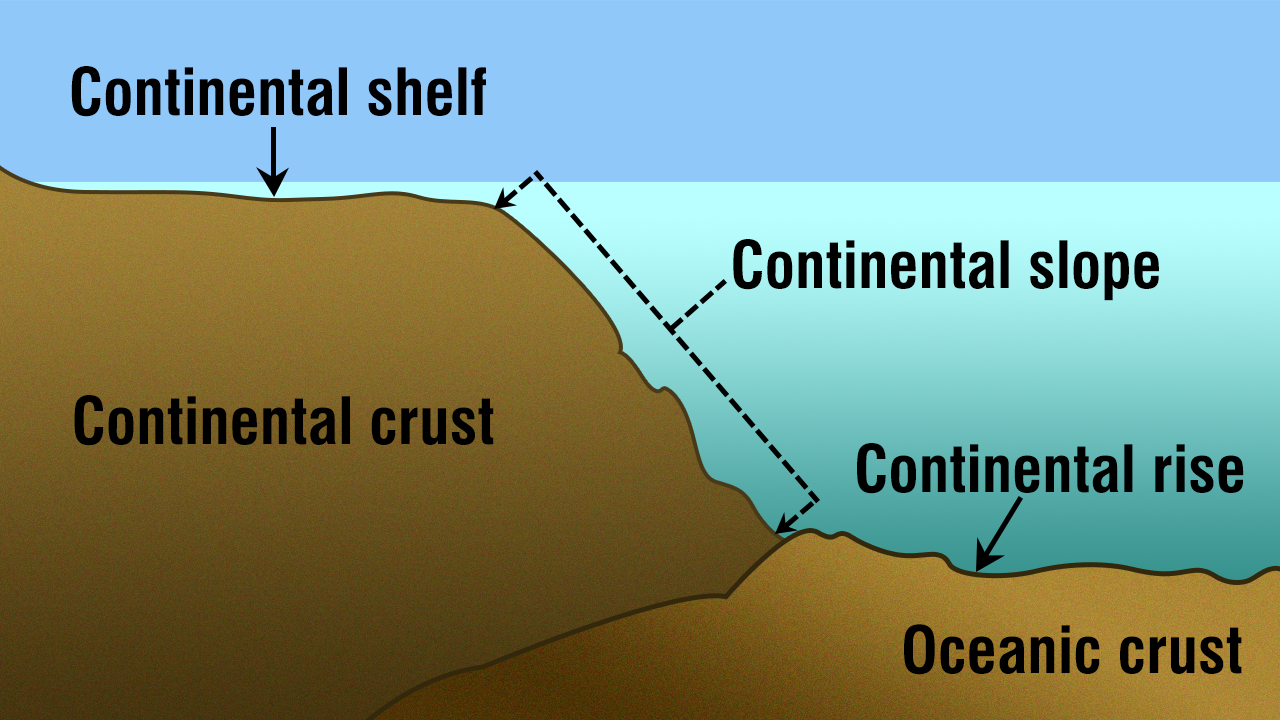Oceanography – Geography Notes – For W.B.C.S. Examination.
সমুদ্র বিজ্ঞান – ভূগোল নোট – WBCS পরীক্ষা।
Continental Shelf
Continental Shelf is the gently sloping seaward extension of continental plate.Continue Reading Oceanography – Geography Notes – For W.B.C.S. Examination.
These extended margins of each continent are occupied by relatively shallow seas and gulfs.
Continental Shelf of all oceans together cover 7.5% of the total area of the oceans.
Gradient of continental is of 1° or even less.
The shelf typically ends at a very steep slope, called the shelf break.
The continental shelves are covered with variable thicknesses of sediments brought down by rivers, glaciers etc..
Massive sedimentary deposits received over a long time by the continental shelves, become the source of fossil fuels [Petroleum].
Examples: Continental Shelf of South-East Asia, Great Banks around Newfoundland, Submerged region between Australia and New Guinea.
The shelf is formed mainly due to
- submergence of a part of a continent
- relative rise in sea level
- Sedimentary deposits brought down by rivers
- There are various types of shelves based on different sediments of terrestrial origin —
- glaciated shelf (Surrounding Greenland),
- coral reef shelf (Queensland, Australia),
- shelf of a large river (Around Nile Delta),
- shelf with dendritic valleys (At the Mouth of Hudson River)
- shelf along young mountain ranges (Shelves between Hawaiian Islands).
Width
The average width of continental shelves is between 70 – 80 km.
The shelves are almost absent or very narrow along some of the margins like the coasts of Chile, the west coast of Sumatra, etc. [Ocean – Continent Convergence and Ocean – Ocean Convergence].
It is up to 120 km wide along the eastern coast of USA. On the contrary, the Siberian shelf in the Arctic Ocean, the largest in the world, stretches to 1,500 km in width.
Depth
- The depth of the shelves also varies. It may be as shallow as 30 m in some areas while in some areas it is as deep as 600 m.
Importance of continent shelves
Marine food comes almost entirely from continental shelves;
They provide the richest fishing grounds;
The continental slope connects the continental shelf and the ocean basins.
It begins where the bottom of the continental shelf sharply drops off into a steep slope.
The gradient of the slope region varies between 2-5°.
The depth of the slope region varies between 200 and 3,000 m.
The seaward edge of the continental slope loses gradient at this depth and gives rise to continental rise.
The continental slope boundary indicates the end of the continents.
Canyons and trenches are observed in this region.They are potential sites for economic minerals [20% of the world production of petroleum and gas comes from shelves. Polymetallic nodules (manganese nodules; concentric layers of iron and manganese hydroxides) etc. are good sources of various mineral ores like manganese, iron copper, gold etc..]
Please subscribe here to get all future updates on this post/page/category/website


 +919674493673
+919674493673  mailus@wbcsmadeeasy.in
mailus@wbcsmadeeasy.in







































































































